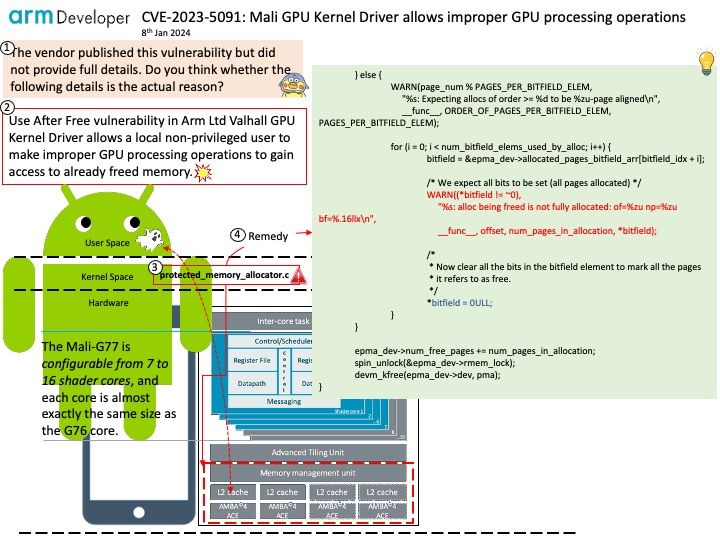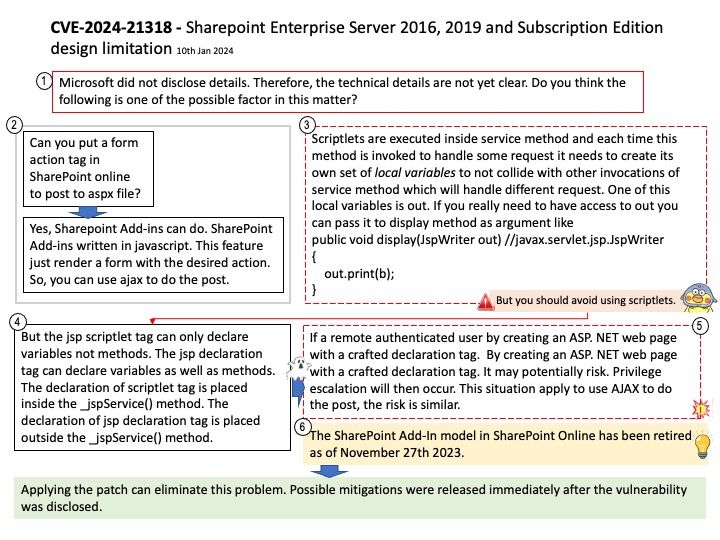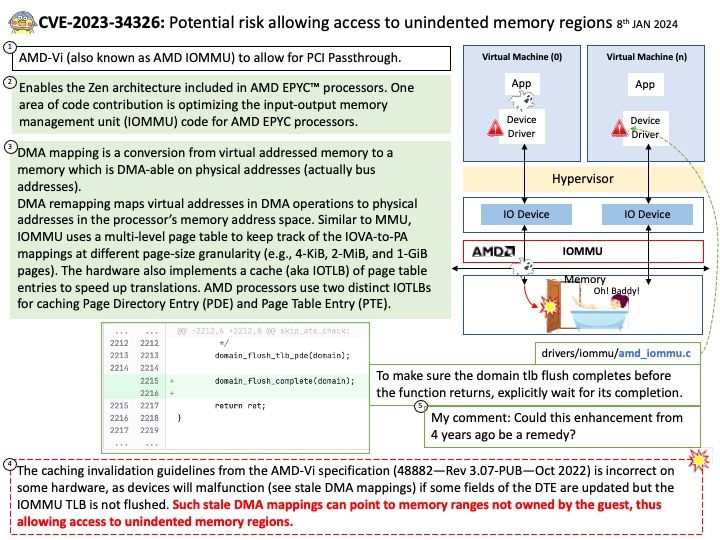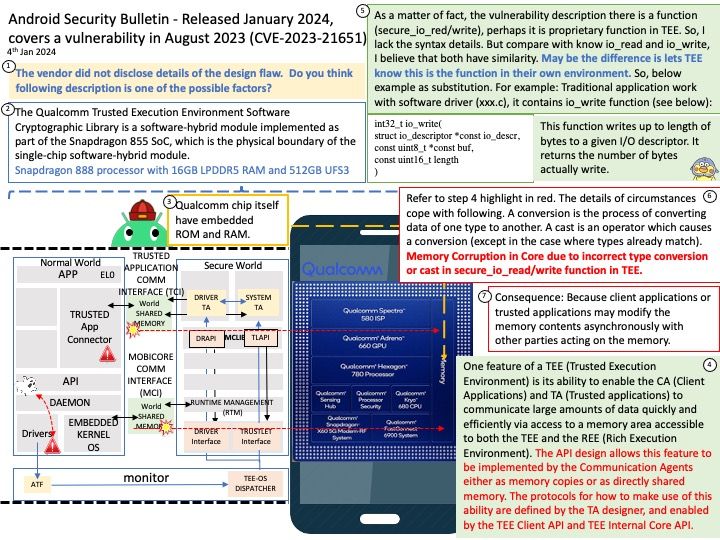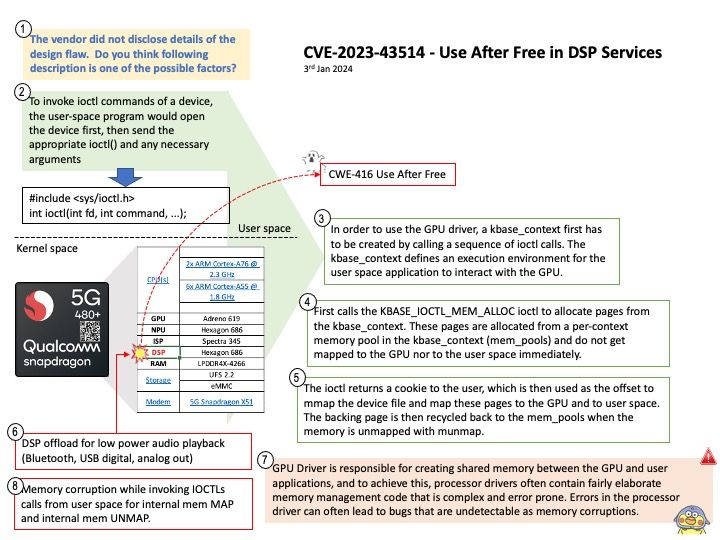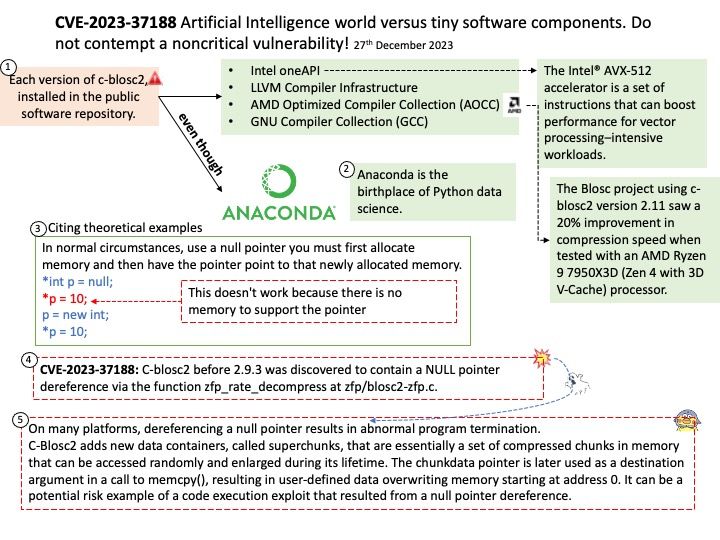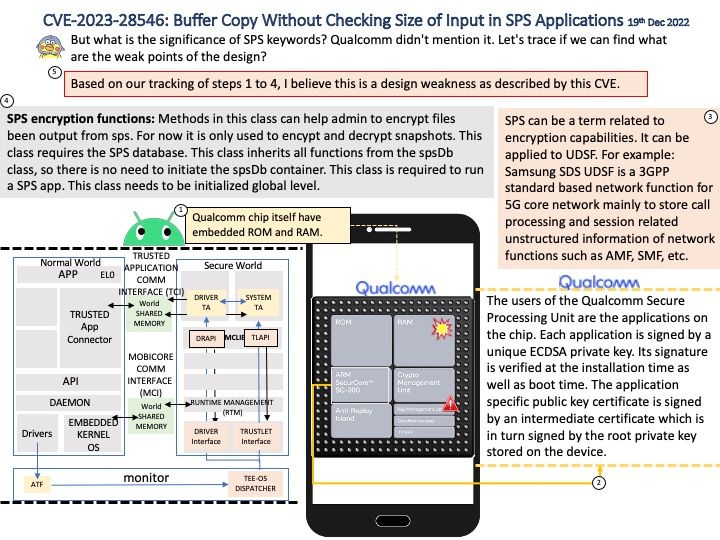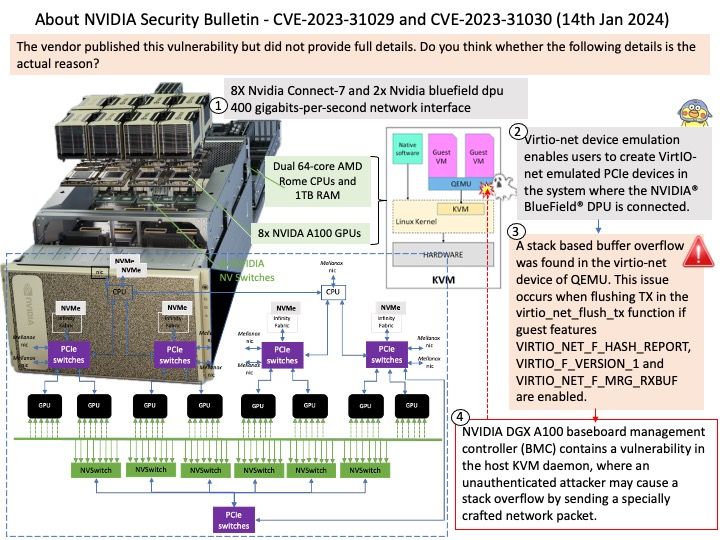
Preface: Artificial intelligence performs better when humans are involved in data collection, annotation, and validation. But why is artificial intelligence ubiquitous in the human world? Can we limit the use of AI?
Background: The NVIDIA DGX A100 system comes with a baseboard management controller (BMC) for monitoring and controlling various hardware devices on the system. It monitors system sensors and other parameters. Kernel-based Virtual Machine (KVM) is an open source virtualization technology built into Linux. KVM lets you turn Linux into a hypervisor that allows a host machine to run multiple, isolated virtual environments called guests or virtual machines (VMs).
What is Virtio-net device? Virtio-net device emulation enables users to create VirtIO-net emulated PCIe devices in the system where the NVIDIA® BlueField® DPU is connected.
Vulnerability details:
CVE-2023-31029 – NVIDIA DGX A100 baseboard management controller (BMC) contains a vulnerability in the host KVM daemon, where an unauthenticated attacker may cause a stack overflow by sending a specially crafted network packet. A successful exploit of this vulnerability may lead to arbitrary code execution, denial of service, information disclosure, and data tampering.
CVE-2023-31030 – NVIDIA DGX A100 BMC contains a vulnerability in the host KVM daemon, where an unauthenticated attacker may cause a stack overflow by sending a specially crafted network packet. A successful exploit of this vulnerability may lead to arbitrary code execution, denial of service, information disclosure, and data tampering.
Official announcement: Please refer to the link for details – https://nvidia.custhelp.com/app/answers/detail/a_id/5510
My comment: The vendor published this vulnerability but did not provide full details. Do you think whether the details in attached diagram is the actual reason?
